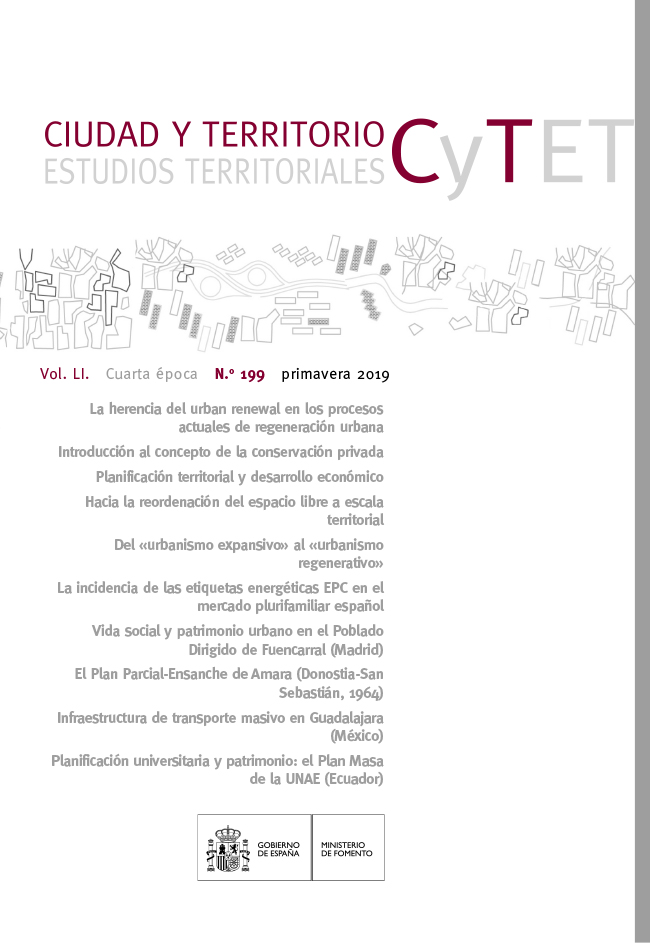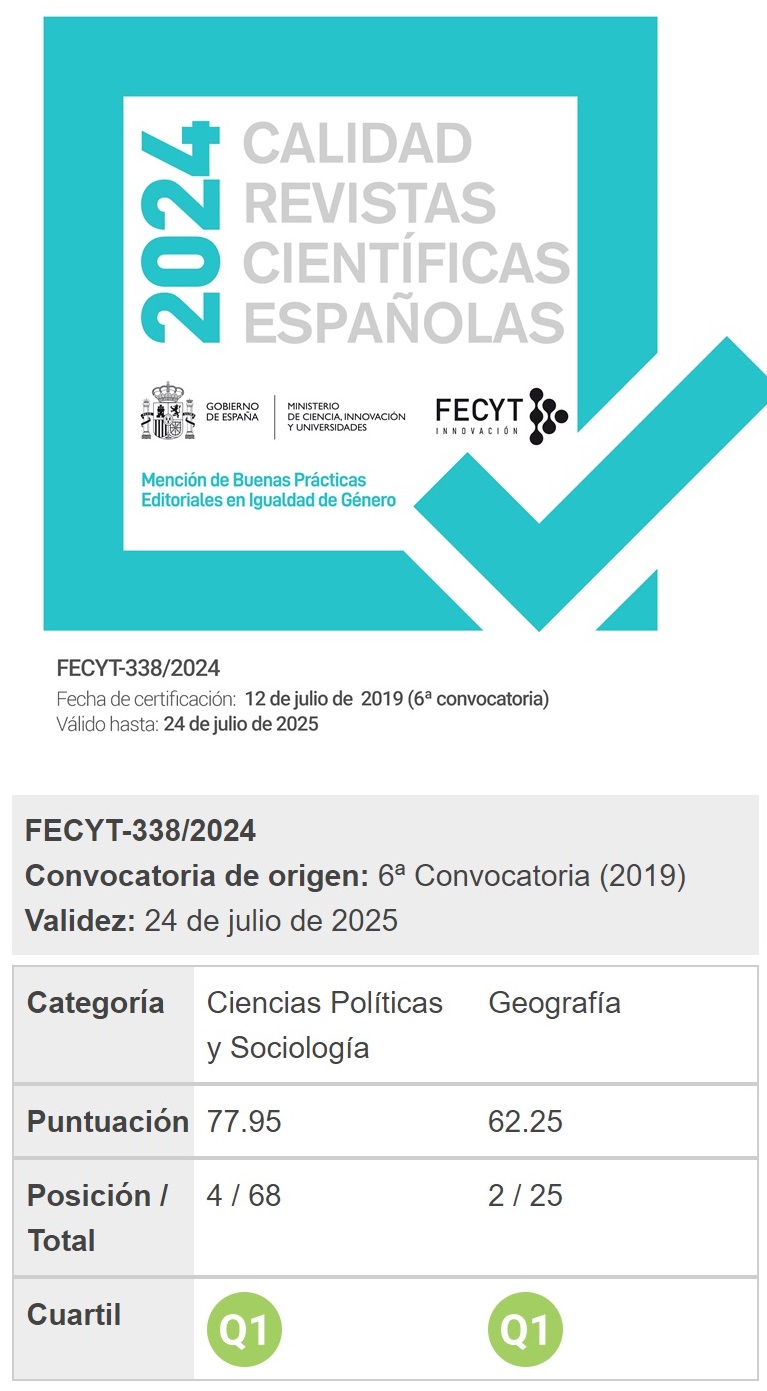El Plan Parcial-Ensanche de Amara (Donostia-San Sebastián, 1964): ¿transición/evolución o ruptura/innovación?
Palabras clave:
Ciudades intermedias, proyecto urbano, teoría del diseño urbano, San Sebastián, Plan Parcial AmaraResumen
La sucesión de propuestas que se arbitraron para la zona de Amara en Donostia – San Sebastián (España) recurren a las teorías y modelos urbanos del momento. Éstas resultan de notable interés, puesto que el tiempo en que se producen coincide con el paso de los antiguos modos urbanísticos a los nuevos, resultantes de la primera Ley del Suelo española y de los nuevos aires de la cultura arquitectónica. De ahí, que el objetivo de este artículo sea mostrar el cambio de paradigma en el diseño urbano del modelo de ensanche al modelo racionalista a través del Plan Parcial de Amara, situado en una zona emblemática de Donostia. Por tanto, dada la evolución en el diseño de sus propuestas, este proyecto se puede considerar de hito histórico en San Sebastián y para llevar a cabo su investigación pormenorizada se han realizado consultas en archivos locales y se ha recurrido a diversa bibliografía a escala nacional e internacional sobre la teoría e historia del diseño urbano en la segunda mitad del siglo XX. De este estudio se extraen unas conclusiones que en su conjunto resultan positivas y que se basan en tres aspectos: el ámbito de estudio como pieza de ciudad en su conjunto, el carácter cambiante de las propuestas y la solución empleada finalmente.Descargas
Descargas
Publicado
Cómo citar
Número
Sección
Licencia
Derechos de autor 2019 Elena Lacilla Larrodé, Jesús Tejada Villaverde, José María Ordeig Corsini

Esta obra está bajo una licencia internacional Creative Commons Atribución-NoComercial-SinDerivadas 4.0.
Sin perjuicio de lo dispuesto en la legislación vigente sobre Propiedad Intelectual, y conforme a la misma, el/la los/las autor/a/es/as que publiquen en CyTET cede/n a título gratuito, de modo no exclusivo y sin límite temporal al Ministerio de Transportes, Movilidad y Agenda Urbana los derechos para difundir, reproducir, comunicar y distribuir en cualquier formato actual o futuro, en papel o electrónico, la versión original o derivada de su obra bajo licencia de Creative Commons Reconocimiento-NoComercial-SinObraDerivada 4.0 Internacional (CC BY-NC-ND 4.0), así como para incluir o ceder a terceros la inclusión de su contenido en índices, repositorios y bases de datos nacionales e internacionales, con referencia y reconocimiento en todo caso de la autoría del mismo.
Además, al realizar el envío, el/la los/las autor/a/es/as declara/n que se trata de un trabajo original en el que se reconocen las fuentes que han sido utilizadas en su estudio, comprometiéndose a respetar la evidencia científica y a no modificar los datos originales para verificar o refutar una hipótesis de partida; que el contenido esencial del mismo no ha sido publicado previamente ni se publicará en ninguna otra obra o revista mientras esté en proceso de evaluación en la revista CyTET; y que no se ha remitido simultáneamente a otra publicación.
Los autores deben firmar un Formulario de Cesión de Derechos, que les será enviado desde la Secretaría de CyTET una vez se acepte su artículo para ser publicado.
Con el objetivo de favorecer la difusión del conocimiento, CyTET se adhiere al movimiento de revistas de Open Access (OA) y entrega la totalidad de sus contenidos a diversos índices, repositorios y bases de datos nacionales e internacionales bajo este protocolo; por tanto, la remisión de un trabajo para ser publicado en la revista presupone la aceptación explícita por parte del autor/a de este método de distribución.
Se anima a las/os autoras/es a reproducir y alojar sus trabajos publicados en CyTET en repositorios institucionales, páginas web, etc. con la intención de contribuir a la mejora de la transferencia del conocimiento y de la citación de dichos trabajos.








 Enlace a CyTET en Linkedin
Enlace a CyTET en Linkedin